The iPhone 5s Review
by Anand Lal Shimpi on September 17, 2013 9:01 PM EST- Posted in
- Smartphones
- Apple
- Mobile
- iPhone
- iPhone 5S
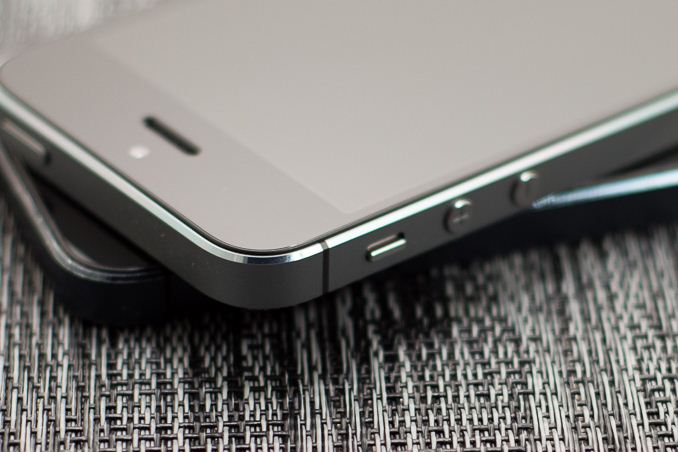
For much of the iPhone's life Apple has enjoyed a first-mover advantage. At the launch of the first iPhone, Steve Jobs expected the device and OS would give it a multi-year head start over the competition. Indeed that's how the market played out. Although Android was met with some early success, it wasn't until well after the launch of the first Android devices that we started seeing broad, mainstream acceptance of the platform. The iPhone bought Apple time, and together with the iPad it brought Apple a tremendous amount of profit over the years. The trick of course is turning a first-mover advantage into an indefinitely dominant market position, a difficult task when you're only making one device a year.
Today we find Apple in a very different position. The iPhone is still loved by a very loyal customer base, but the competition is much stronger than it was back in 2007. The modern smartphone market has also evolved. When Apple introduced the original iPhone with its 3.5" display, Steve called it "giant" on stage. Today even HTC's One mini ships with a 4.3" display.
Last year we saw Apple begin to address the changing landscape with the iPhone 5. The 5 saw Apple moving to a thinner, lighter chassis with much better internals and a significantly larger display. While there is market demand for Apple to do the same again, and move to an even larger display, there are some traditions Apple is sticking to. In this case, it's the tradition of the S-update.
The iPhone 5s continues Apple’s tradition of introducing a performance focused upgrade for the last year of any new chassis design. The first time we encountered an S-update was with the 3GS, which took the iPhone away from its sluggish ARM11 roots and into the world of the Cortex A8.
The next S-upgrade came with the iPhone 4S: Apple’s first smartphone to use a dual-core SoC. At the time I remember debate over whether or not a performance upgrade alone was enough to sell a new device, especially one that didn’t look any different. I’m pretty much never happy with the performance I have, so I eagerly welcomed the new platform. Looking back at the iPhone 4 vs. 4S today, I’d say the investment was probably worth it. In preparation for this review I threw iOS 7 on every iPhone that would support it, dating back to the iPhone 4. In my experience, the 4 is a bit too slow running iOS 7 - the 4S really should be the minimum requirement from a performance standpoint.
That brings us to the iPhone 5s, the third in a list of S-upgrades to the iPhone platform. Like the S-devices that came before it, the iPhone 5s is left in the unfortunate position of not being able to significantly differentiate itself visually from its predecessor. This time around Apple has tried to make things a bit better by offering the 5s in new finishes. While the iPhone 5 launched in silver and black options, the 5s retains silver, replaces black with a new space grey and adds a third, gold finish.
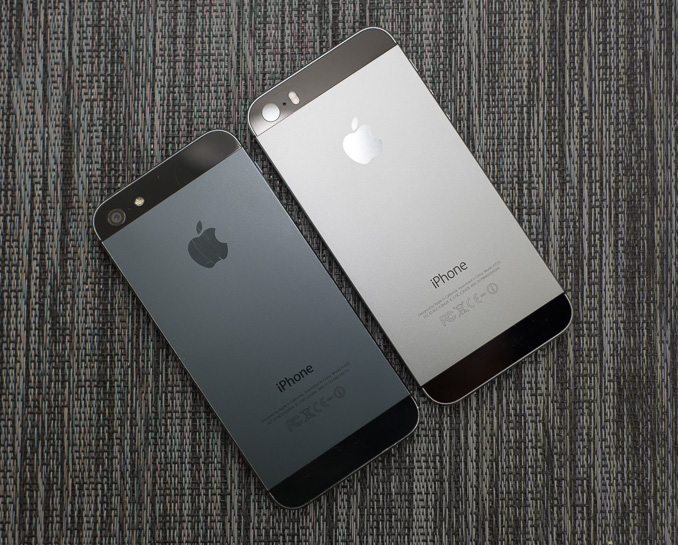
old black iPhone 5 (left) vs. new space grey iPhone 5s (right)
I was sampled a space grey iPhone 5s, which worked out well given my iPhone 5 was black. The new space grey finish is lighter in color (truly a grey rather than a black) and has more prominently colored chamfers. The move to a lighter color is likely to not only offer a little bit of visual differentiation, but also to minimize the appearance of scuffs/scratches on the device. My black iPhone 5 held up reasonably well considering I carry it without a case, but there’s no denying the fact that it looks aged. Interestingly enough, I never really got any scratches on the back of my 5 - it’s the chamfers that took the biggest beating. I have a feeling the new space grey finish will hold up a lot better in that regard as well.
The addition of a gold option is an interesting choice. Brian and I saw the gold iPhone up close at Apple’s Town Hall event and it really doesn’t look bad at all. It’s a very subtle gold finish rather than a gaudy gold brick effect. I think gold is likely the phone I’d opt for simply because it’d be very different than everything else I have, but otherwise space grey is probably the best looking of the three devices to me.
Along with the new finishes come new leather cases to protect the 5s. These cases are designed and sold by Apple, and they are backwards compatible with the iPhone 5 as well. Apple calls them leather cases but I'm not entirely sure if we're talking about real leather here or something synthetic. Either way, the new cases feel great. They've got a very smooth, soft texture to them, and are lined with a suede like material.
The new cases don't add a tremendous amount of bulk to the device either. The cases are available in 5 different colors and retail for $39:
I was sampled a beige case and have been using it non-stop for the past week. I really like the case a lot and it did a great job protecting the 5s over the past week while I was traveling. I took all of the photos of the review device after I returned home from traveling, but thanks to the case the device still looked as good as new. If you're considering one of these cases you might want to opt for a darker color as the edges of my case started to wear from constantly pulling the phone out of my pockets:
If you're fine with the distressed leather look then it's not a concern, but if you're hoping to keep your case pristine you may want to look at other cases. If you want a more affordable & more rugged option, Brian turned me on to the Magpul Field case which should work perfectly with the iPhone 5s.
Since the 5s is an S-upgrade, the chassis remains unchanged compared to the iPhone 5. The 5s’ dimensions are identical to that of the iPhone 5, down to the last millimeter of size and gram of weight. Construction, build quality and in-hand feel continue to be excellent for the iPhone 5s. Despite the diet the iPhone went on last year, the 5/5s chassis is still substantial enough to feel like a quality product. I remember criticisms of the iPhone 5 at launch, saying that it felt too light. Now going back and holding an iPhone 4S, it feels like the very opposite is true - the 4S was too heavy
The iPhone 5s design remains one of the most compact flagship smartphones available. The move to a 4-inch display last year was very necessary, but some will undoubtedly be disappointed by the lack of any further progress on the screen dimension front. A larger display obviously wasn’t in the cards this generation, but I have a strong suspicion Apple has already reconsidered its position on building an even larger iPhone. Part of the problem is the iPhone’s usable display area is very much governed by the physical home button and large earpiece/camera area at the top of the device. Building a larger iPhone that isn’t unwieldy likely requires revisiting both of these design decisions. It’s just too tall of an order for a refresh on the same chassis.
Brian often talks about smartphone size very much being a personal preference, and for many the iPhone 5 continues to be a good target. If you fall into that category, the 5s obviously won’t disappoint. Personally, I would’ve appreciated something a bit larger that made better use of the front facing real estate. The 5s’ width is almost perfect for my hands. I could deal with the device being a little larger, with the ideal size for me landing somewhere between the iPhone 5 and the Moto X.
It remains to be seen the impact display size has on iPhone sales. Anecdotally I know a number of die hard iPhone users who simply want a larger display and are willing to consider Android as a result. I still believe that users don’t really cross shop between Android and iOS, but if Apple doesn’t offer a larger display option soon then I believe it will lose some users not because of cross shopping, but out of frustration.
As a refreshed design, the iPhone 5s carries over all of the innovations we saw in the 5 last year. The iPhone 5s features the same Lightning connector that debuted on the iPhone 5, and has since been extended to the iPad lineup as well as the new iPods.
As with all other S-upgrades, the biggest changes to the iPhone 5s are beneath the aluminum and glass exterior. The 5s’ flagship feature? Apple’s new A7 SoC. The A7 is the world's first 64-bit smartphone SoC, and the first 64-bit mobile SoC shipping in a product (Intel’s Bay Trail is 64-bit but it won’t ship as such, and has yet to ship regardless). In addition to the new 64-bit SoC Apple upgraded both cameras in the iPhone 5s and added a brand new fingerprint sensor called Touch ID. Of course the iPhone 5s is one of the first new iPhones to ship with iOS 7 from the factory.
| Apple iPhone 5 | Apple iPhone 5c | Apple iPhone 5s | |
| SoC | Apple A6 | Apple A6 | Apple A7 |
| Display | 4-inch 1136 x 640 LCD sRGB coverage with in-cell touch | ||
| RAM | 1GB LPDDR2 | 1GB LPDDR3 | |
| WiFi | 2.4/5GHz 802.11a/b/g/n, BT 4.0 | ||
| Storage | 16GB/32GB/64GB | 16GB/32GB | 16GB/32GB/64GB |
| I/O | Lightning connector, 3.5mm headphone | ||
| Current OS | iOS 7 | ||
| Battery | 1440 mAh, 3.8V, 5.45 Whr | 1507 mAh, 3.8V, 5.73 Whr | 1570 mAh, 3.8V, 5.96 Whr |
| Size / Mass | 123.8 x 58.6 x 7.6 mm, 112 grams | 124.4 x 59.2 x 8.97 mm, 132 grams | 123.8 x 58.6 x 7.6 mm, 112 grams |
| Camera |
8MP iSight with 1.4µm pixels Rear Facing 1.2MP with 1.75µm pixels Front Facing |
8MP iSight with 1.4µm pixels Rear Facing 1.2MP with 1.9µm pixels Front Facing |
8MP iSight with 1.5µm pixels Rear Facing + True Tone Flash 1.2MP with 1.9µm pixels Front Facing |
| Price | $199 (16GB), $299 (32GB), $399 (64GB) on 2 year contract | $99 (16GB), $199 (32GB) on 2 year contract | $199 (16GB), $299 (32GB), $399 (64GB) on 2 year contract |
The iPhone 5s also breaks with tradition in a couple of ways. The 5s is the first iPhone in recent history to not be offered up for pre-order. Apple expects demand for the iPhone 5s to severely outstrip supply, and as a result won't be accepting pre-orders on the 5s.
The other big change is what happens to the previous generation iPhone. In the past, Apple would discount the previous generation iPhone by $100 on-contract and continue to sell those devices at low capacity points. A two-generation old iPhone was often offered for free on-contract as well. This time, the iPhone 5s replaces the iPhone 5 at the high end, but the iPhone 5 ceases production. Instead, the 5 is replaced with a cost reduced version (the iPhone 5c). As the glass & aluminum iPhone 5/5s chassis likely doesn't scale well in price, coming up with a new polycarbonate design for slightly lower price points makes sense. I have written a separate piece on the iPhone 5c as I have more than enough to talk about with the iPhone 5s in this review.
I'll start with the big ticket item: Apple's 64-bit A7 SoC.


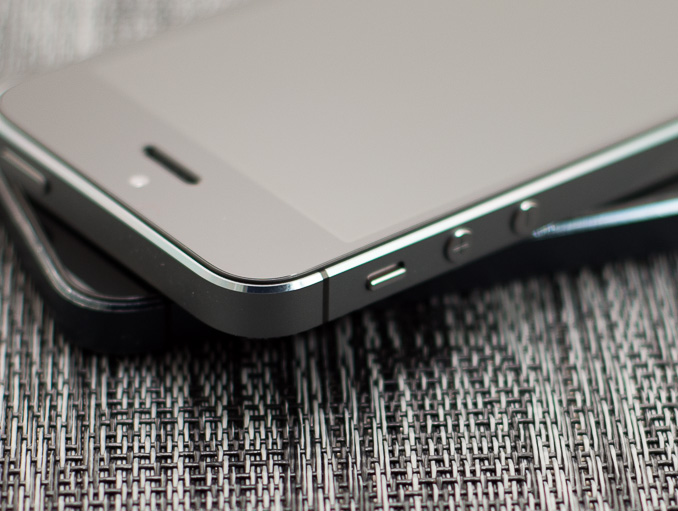
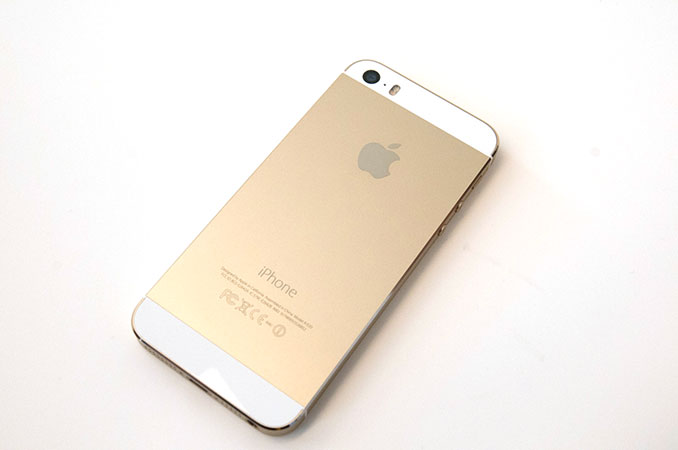
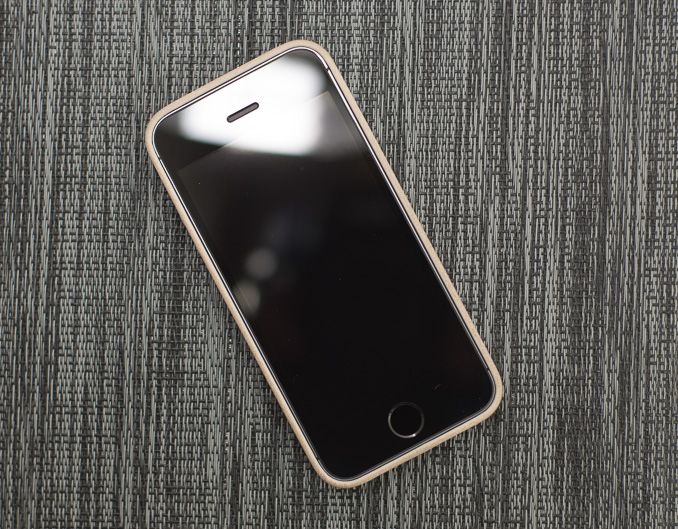
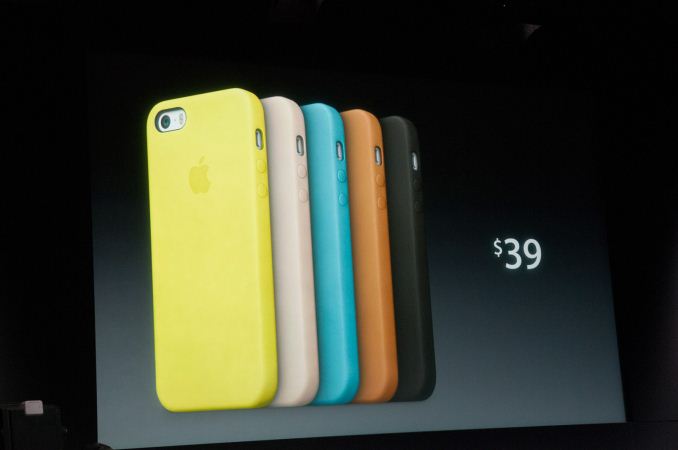
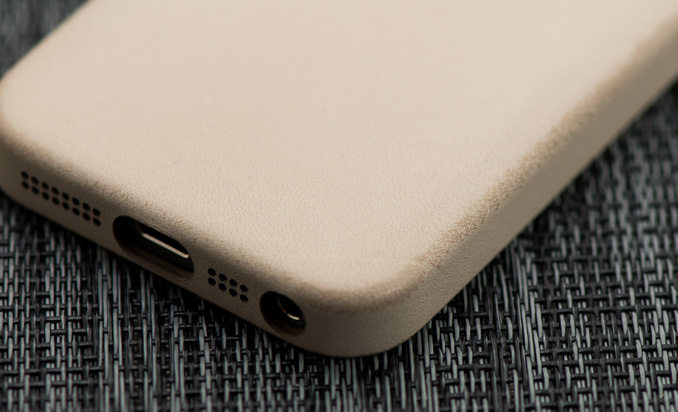
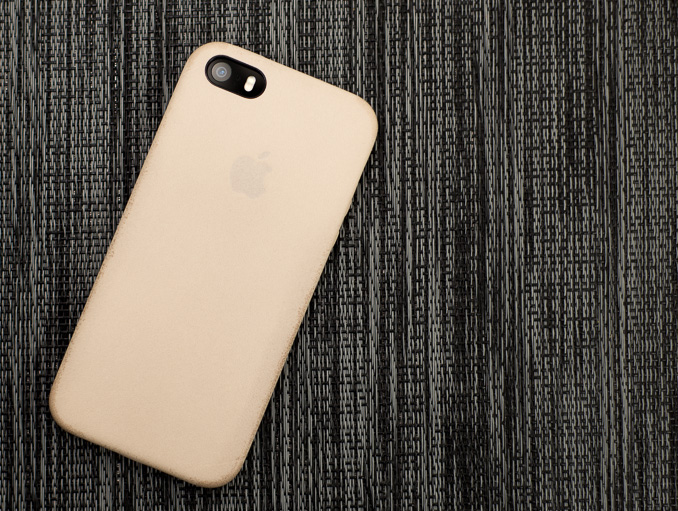








464 Comments
View All Comments
akdj - Thursday, September 19, 2013 - link
I'm with ya on the note. I bought the original GNote and the contract can't end quick enough. It's a dog! Slow as molasses and my wife and each own one as our 'business' phones. Made sense, our clients can sign with the stylus their credit card authorization. We use the Square system for CCs and we won't be buying the Notes again. I think you're right. TouchWiz is a killercoolhardware - Tuesday, September 17, 2013 - link
Very true, however, it is my understandingthat sometimes Apple can use their volume to (A) get things a bit before everyone else (like when Apple gets Intel CPUs before others) or (B) get something special added/tweaked/improved on an existing component (batteries, displays, materials).Sorry to not have more definitive references/examples for (A) & (B) but here's a recent illustration:
http://www.macrumors.com/2013/07/26/intel-to-suppl...
How much this really happens I do not know, but I imagine suppliers want to keep Apple happy :-)
akdj - Tuesday, October 8, 2013 - link
They sold more iOS devices last year (200,000,000) than vehicles sold in the world. They're still the world's number one selling 'phone'. Samsung makes a dozen...maybe two? Their flagships tend to sell well (wasn't the S3 close to 30mil @ some point?)---but no where near the iPhone specific sales figures....when you're dealing in that quantity--ya betcha....you'll have access, pricing and typically 'pick of the litter'melgross - Wednesday, September 18, 2013 - link
Display density is now nothing more than a marketing tool. It no longer serves any purpose. Displays with ppi's of over 350 don't give us any apparent extra sharpness, as we can't see it. The Galaxy S4 has a much higher Rez display, but it still uses PenTile, so that extra Rez is only allowing the screen to look as good as a lower Rez display. I'm wondering what Apple will do with the iPad Retina. If they do what they've been doing, then the display will have four times the number of pixels, and will be one of, if not the highest ppi displays on the market. They do that to make it easy for developers, but it's obviously unnecessary. No one has ever been able to see the pixels on my 326 ppi iphone display. in fact, no one has ever seen the pixels on my 266 ppi ipad Retina display. Hopefully we'll find out in a month.melgross - Wednesday, September 18, 2013 - link
Oops! I meant what will they be doing with the iPad Mini Retina display of course.ESC2000 - Saturday, September 21, 2013 - link
There isn't one definitive cutoff above which extra pixels are useless since people hold their phones different distances from their faces and people have varying eyesight. 'Retina' is pure marketing - first apple used it to emphasize how great their high rez (for the time) screens were (and they did look a lot better than 15" 1366x768 screens) and now they're using it to disguise the fact that this is the same low rez (for the time) screen that they've had on the iPhone 5 for a year.I don't even have good eyesight but even I can see that the LG G2 screen (441 PPI) is better than my nexus 7 2013 screen (323 PPI) which is better than the iPad 3 screen (264 PPI - I don't have the 4 for comparison) which is miles better than the iPad mini screen (163 PPI). Personally I'd slot the iPhone 5 after the nexus 7 2013 on that list even though the PPI are about the same. Obviously other factors, often subjective, affect our preferences. I find most apple screens washed out but many people feel they are the only true color reproductions.
Regardless the random arbitrary cutoffs beyond which extra PPI supposedly makes no difference is a copout.
tuxRoller - Tuesday, September 17, 2013 - link
Great review. I wish we could see this for the other architectures/socs.If want to see the code for the benchmarks (and you should) there are plenty of oss suites you can choose from. You could use linaro's if you want, but for the stream benchmark you could grab http://www.cs.virginia.edu/stream/FTP/Code/ and compile it on xcode.
abrowne1993 - Tuesday, September 17, 2013 - link
Not a single Lumia in the camera comparison? Why? The people who are really concerned about their smartphone's camera performance will put up with the WP8 platform's downsides.A5 - Tuesday, September 17, 2013 - link
I would guess Anand doesn't have a 1020 handy to compare with. Probably have to wait for Brian on that one.Anand Lal Shimpi - Wednesday, September 18, 2013 - link
This. I only compared to what I had on hand.